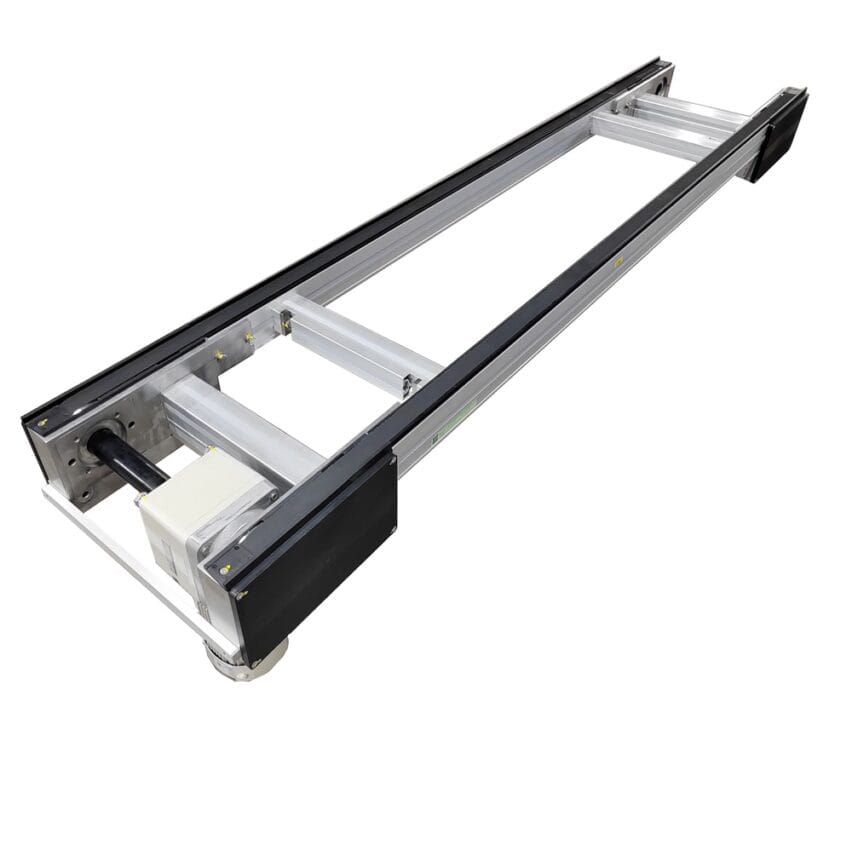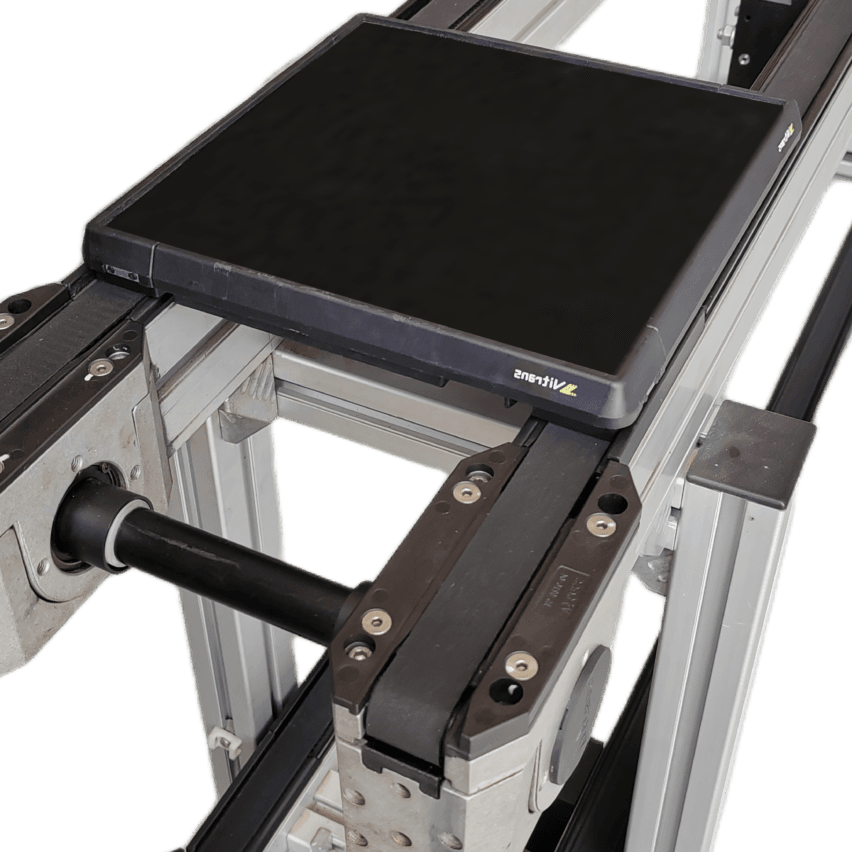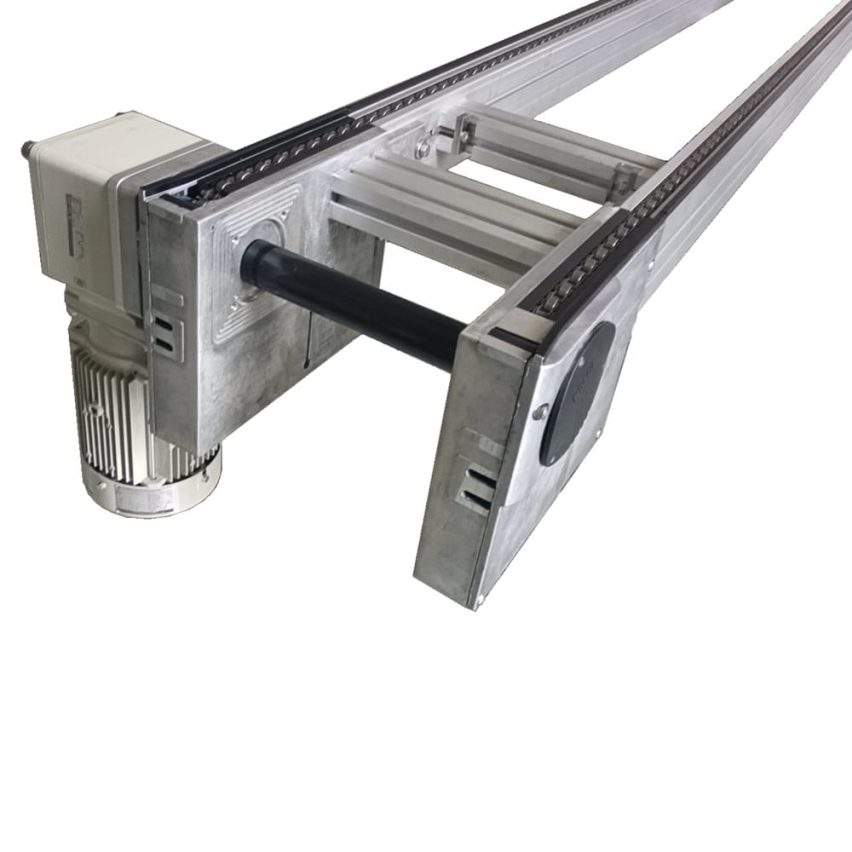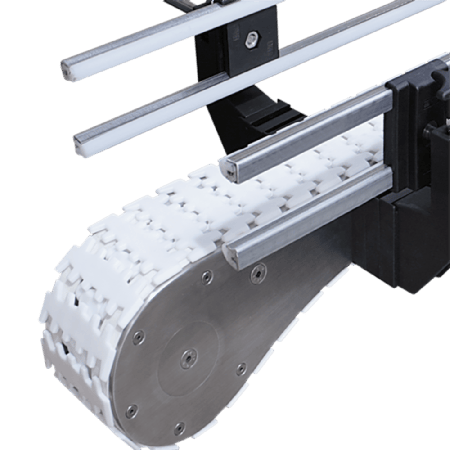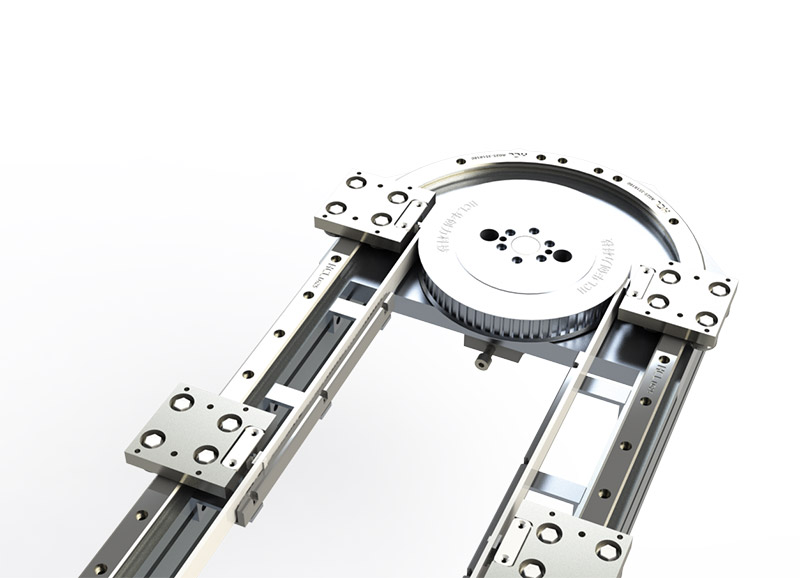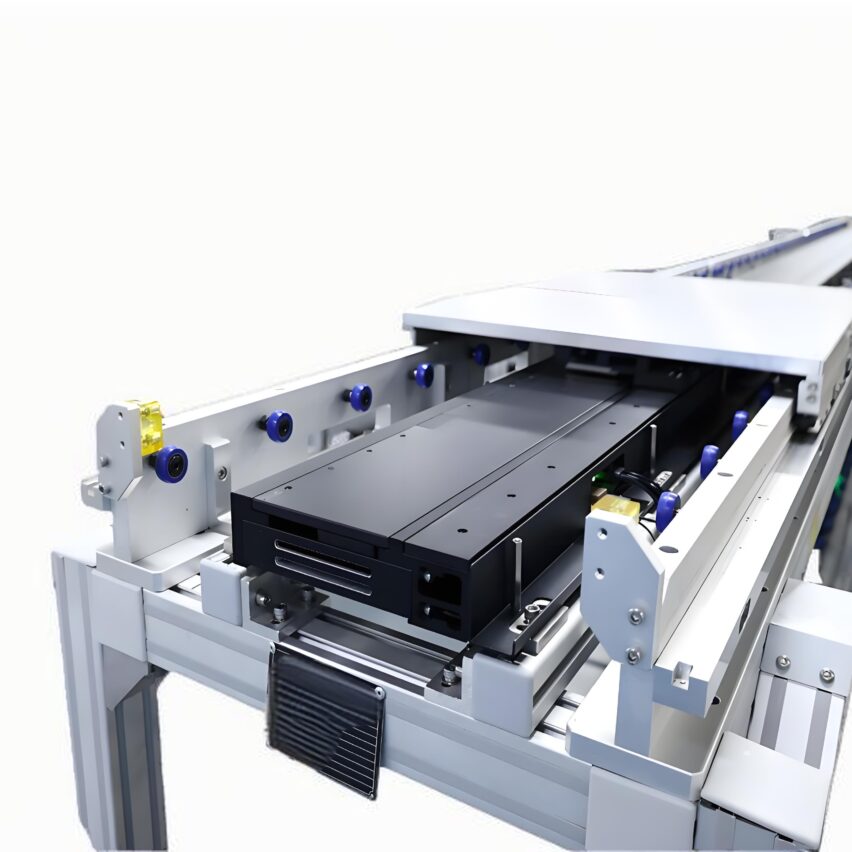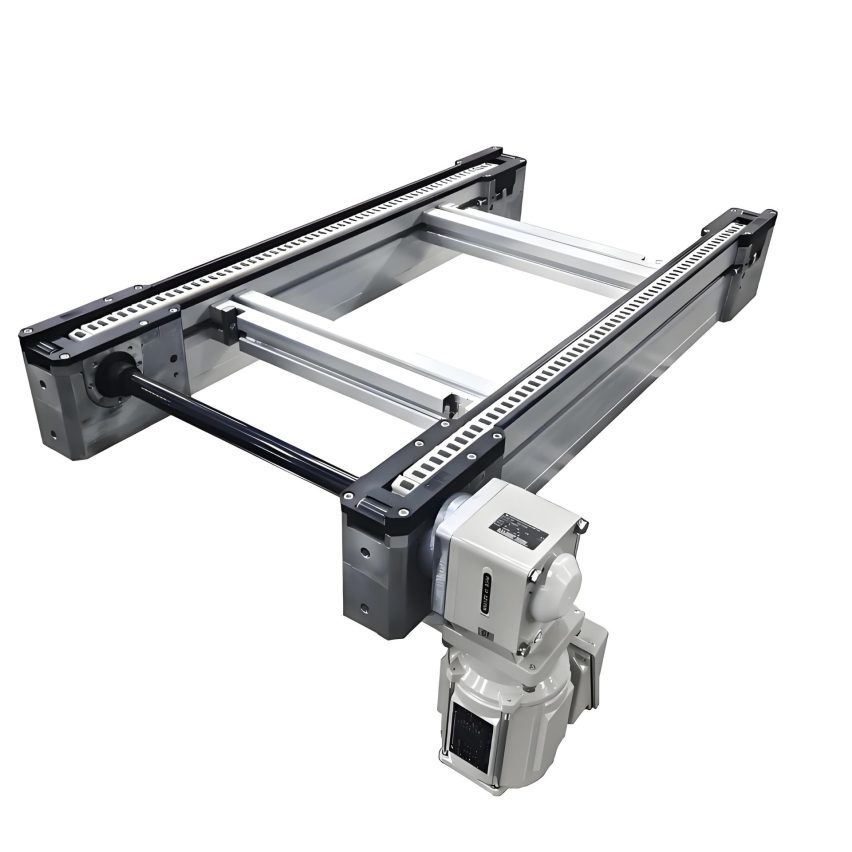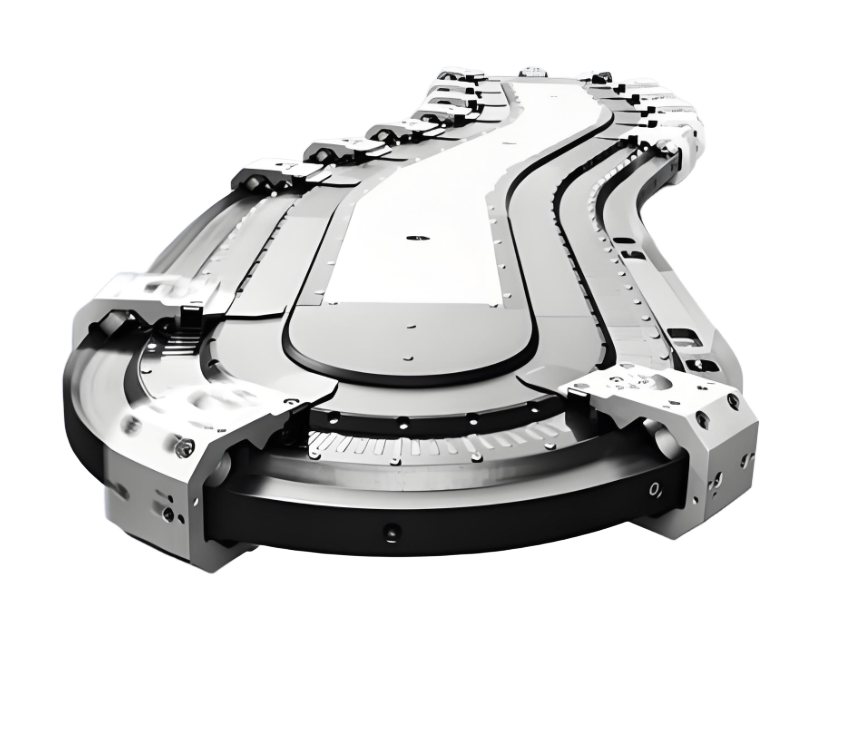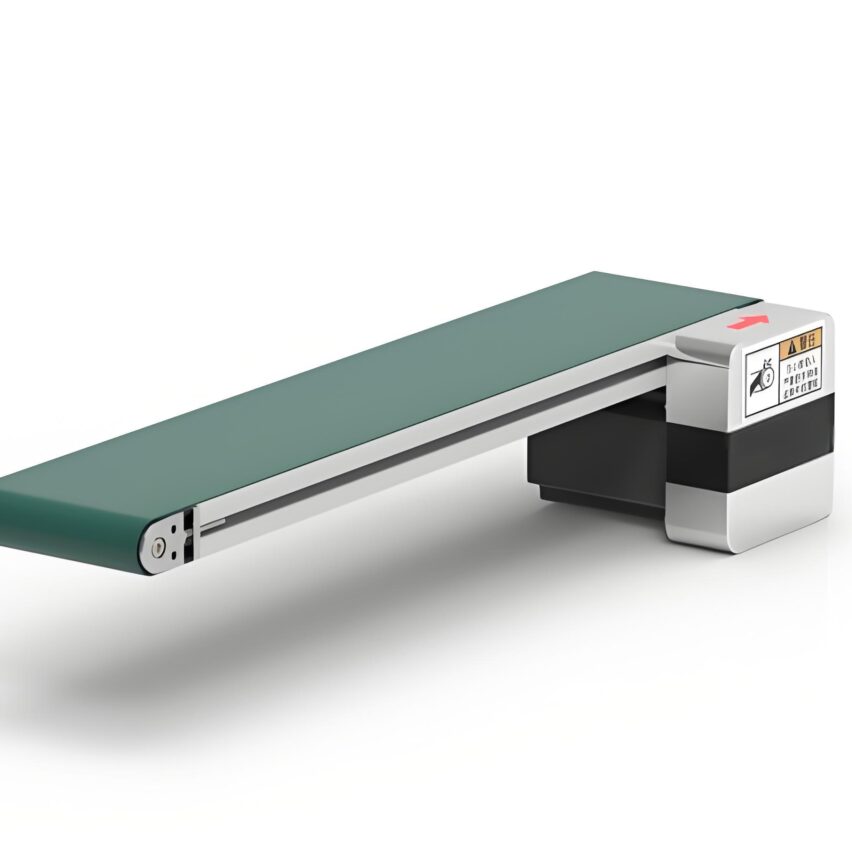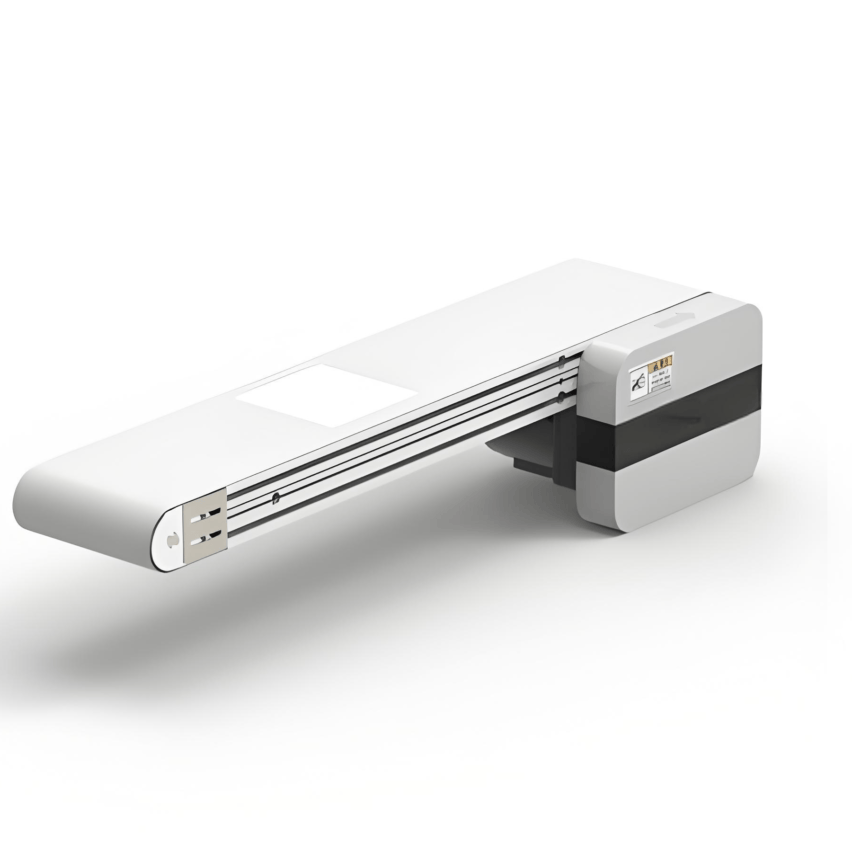Against the backdrop of an average annual increase of 121 TP3T in the cost of industrial land, theOne double-deck speed chain system saves 37% of floor spaceIt also increases the density of output per unit area to 1.8 times that of a single-layer line - making it a vertical revolutionising tool for the manufacturing industry to cope with space bottlenecks.
I. Core values: double breakthroughs in space and efficiency
1. Underlying logic of the three-dimensional circulation system
- Space compression algorithms: production of workpieces on the upper level and return of unloaded workpieces on the lower level, vertical circulation by means of jacking translators, freeing up flat space redundancy
- Dynamic Adaptation CapabilityAdjustable cylinder stroke (50-300mm), compatible with mixed production of automotive dashboards with a heavy load of 800kg and electronic controllers with a light load of 5kg.
- Failure cost annihilationA case study of a battery factory shows that after optimising the buffer design, the collision rate of empty boards was reduced from 7% to 0.3%, saving 800,000 RMB in replacement cost per year.
2. Technology paradigm for industry customisation
make a copy of■ Automotive manufacturing: carbon steel frame + chain plate topology optimisation (single point load-bearing 800kg) ■ Food and medicine: PTFE guide (friction coefficient of 0.04) + ultrasonic vibration plate anti-sticking ■ Electronic precision: engineering plastic roller (resistance 10⁶-10⁹Ω) to reduce 85% dust adsorption [1,6](@ref)`` --- ### **II. booking must know: technical parameters and selection rules** **1. Critical parameter baseline ** | Parameter item | Standard value | Critical risk point | |--------------|---------------------|------------------------| | Line height | 2000mm | >2200mm need to reinforce the support | | Running speed | 5-10m/min (recommended) | >15m/min accelerates guide rail wear | | Chain verticality ≤2% pitch | >3% need immediate tensioning | Position spacing | 2 times the length of the pallet | Too close to cause stopper failure | **2. Formula for selecting the type of chain - **2.5x chain**: preferred for heavy load scenarios (load >500kg), high overload tolerance - **3 times the speed chain**: light load high-speed scenes, but overload 30% failure rate soared 50% - **Material paradox**: - Hardened alloy steel chain (temperature resistance 600℃) suitable for forging workshop - Engineering plastic chain (electrostatic index 10⁶-10⁹Ω) is a must for electronics workshop > *Industry Insight: 60% users blindly pursuing 3 times the speed chain, but ignored **Heavy load scenarios 2.5 times the stability of the chain instead of improving the 40% ** - the balance of speed and load is more important than a single parameter. *The balance between speed and load is more important than a single parameter. --- ### **Third, the scheduled process: a nine-stage model from demand matching to production** **1. Requirements penetration phase ** - **Load spectrum analysis**: record peak loads, workpiece size distribution, empty-to-full ratio (case in point: Great Wall Motor requires empty plate share >40% to enable lower level reflow) - **Environmental Audit**: high temperature workshop mandatory requirements for temperature resistance > 150 ℃ chain, explosion-proof scenarios require resistance ≤ 10⁶Ω conductive wheel **2. Technology landing stage** ``Design - manufacturing - installation of three-loop coupling ① Layout design: laser marker positioning, track splicing seam ≤ 0.05mm (plug ruler detection) ② drive system: motor - reducer double table method alignment (radial deviation ≤ 0.08mm) ③ Safety redundancy: emergency stop button response <0.5 seconds, protective mesh hole ≤ 8mm [7,8](@ref)`` **3. Acceptance criteria** - **No load test**: Acceleration to the highest speed takes >8 seconds (anti-sharp start and stop), noise at 1m ≤72dB - **Load verification**: step loading to 100% rated load, motor current fluctuation <±5% --- ### **Four, installation and commissioning: precision control of the five life and death details** **1. Track level control - Foot adjustment accuracy ≤ 0.5mm / m, exceeding the difference will lead to chain hard grinding aluminium profiles (monthly failure rate ↑ 37%) - The total length of 12 metres line body is recommended to be spliced in two sections, a single section of more than 6 metres need to be reinforced in the middle. **2. Golden rule of chain tension - Pre-tension = working tension × 120% (maintained for 30 minutes) - Tensioner retains 10-15mm margin, the sagging amount of the actual measurement method: the centre point of the press down amplitude ≈ 2% chain length **3. Electrical integration minefield ** ``Fatal items of inverter parameters ■ Carrier frequency set to 5kHz (lower than the default value can reduce electromagnetic interference) ■ Acceleration curve slope ≤ 12Hz / sec (anti-chain jump teeth) ■ Overload protection threshold = motor rated current × 110% [8](@ref)`` --- ### **V. Intelligent Operations and Maintenance: a three-dimensional model for predictive maintenance ** **1. List of daily point checks** - **Before start-up**: check for track debris jamming (especially chain articulation) - **During operation**: monitor the conductive wheel temperature >70°C and shut down immediately - **After shutdown**: Remove slag (to avoid corrosion of the chain) **2. Economical maintenance strategies** **After shutdown**: Remove slag (to avoid corrosion of the chain). ``Three-year cycle cost comparison ├─Passive maintenance: monthly failure 5.2 times, total cost = equipment price × 1.8 └─Predictive maintenance: vibration sensor warning chain droop>2%, failure interval delayed to 45 days, cost ↓28%`` **3. Critical Component Life Cycle Chart** | Components | Replacement Intervals | Signs of Failure | |------------------|----------------|------------------------| | Engineering Plastic Roller | 80,000 km | Diameter difference > 0.05mm | | Lithium-based high-temperature resistant grease | 500 running hours | Bearing temperature rise >35℃ | | Inverter capacitor | 3 years | Current fluctuation during acceleration>±10% | --- ### **Q&A: Three Questions Decision Makers Must Ask** **Q1: Why does the scheduled cycle take 45 days? What parts of the process can be compressed? ** A: **Time Breakdown and Optimisation Path**: 1. **Design Phase (15 days)**: can be compressed to 7 days by providing full load spectrum 2. **Material procurement (20 days)**: 10 days can be saved by specifying domestic standard chain instead of customised chain. 3. **Installation and commissioning (10 days)**: 3 days can be saved by completing the ground levelling (error ≤3mm) in advance. **Q2: How to verify the technical strength of suppliers? ** A: **Three-step evaluation method**: ``■ Case review: request for heavy-duty case videos (e.g. 800kg continuous operation) ■ Factory audit: check the track machining accuracy (roughness Ra ≤ 3.2μm) ■ Pressure test: no-load acceleration to 20m/min is required to verify the anti-tooth jumping capability [1,7](@ref)`` **Q3: How can sticky dirt jams be eradicated in food plants? ** A: **Anti-sticking technology package**: - **Material layer**: PTFE rail (friction coefficient 0.04) - **Mechanical layer**: 0.5MPa water pressure spray every 2 hours - **Biochemical layer**: food grade enzymatic spray automatically breaks down syrup residue > **Vertical dimension mobility is reconstructing the industrial value formula**: a heavy industry enterprise measurement shows that 12m double-layer speed chain can create $8,000 years of marginal profit for every 1m length compression - this confirms that **Space efficiency × Failure attenuation coefficient** is the new coordinate of the competition of smart manufacturing.

